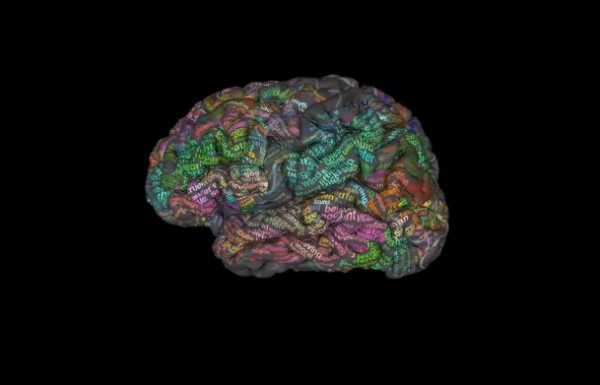By Ana Verayo, | April 28, 2016

The map reveals how language is spread throughout the cortex and across both hemispheres, showing groups of words clustered together by meaning.
Scientists have built this new brain map revealing a "semantic atlas" or thesaurus of the brain that identifies the regions where words make sense, like those that possess similar meanings. This new study can be most useful to those who are suffering from brain damage or motor neuron diseases, and those who are recovering from stroke.
Like Us on Facebook
This remarkable atlas is presented in 3D vivid colors including a variety of dimensions determining how the human brain functions with language. By charting how language is formed and organized within the brain, this decoding can reveal much about inner thoughts that can be a possible step closer to mind reading technology.
Doctors can now track brain activity of patients who have trouble with verbal communications so that this data can be matched with this semantic language map to identify the patients' thoughts. These new findings also show that different people apparently share similar language maps.
According to lead author of the study, Alex Huth from the University of California, Berkeley, there is a similar semantic topography even in different subjects which has been really surprising. The maps also revealed that there are many regions inside the brain that represent language describing people and their social relations as opposed to abstract concepts.
Huth says that these semantic models are efficient in the prediction of language responses involving several large areas of the brain.This data can tell what kind of information is represented in each area of the brain which is why these maps are exciting to learn since they hold so much potential in learning more about how communication is formed.
According to Kenneth Whang of the National Science Foundation's Information and Intelligent Systems division, this feat in mapping out semantic representations of the brain in this kind of detailed level is a stunning accomplishment indeed.
The team shows how data from computational techniques can further help in the understanding of the brain in such a level of complexity and depth that can be associated with the fascinating process of human cognition.
This new study is published in the journal Nature.
-
Use of Coronavirus Pandemic Drones Raises Privacy Concerns: Drones Spread Fear, Local Officials Say

-
Coronavirus Hampers The Delivery Of Lockheed Martin F-35 Stealth Fighters For 2020

-
Instagram Speeds Up Plans to Add Account Memorialization Feature Due to COVID-19 Deaths

-
NASA: Perseverance Plans to Bring 'Mars Rock' to Earth in 2031

-
600 Dead And 3,000 In The Hospital as Iranians Believed Drinking High-Concentrations of Alcohol Can Cure The Coronavirus

-
600 Dead And 3,000 In The Hospital as Iranians Believed Drinking High-Concentrations of Alcohol Can Cure The Coronavirus

-
COVID-19: Doctors, Nurses Use Virtual Reality to Learn New Skills in Treating Coronavirus Patients







